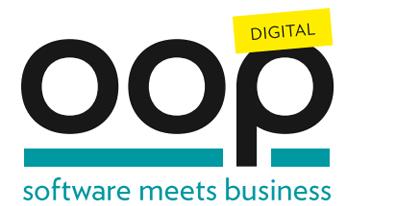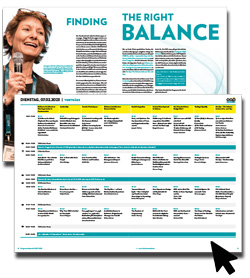Das gesamte Konferenzprogramm auf einem Blick? Kein Problem, alle Programminhalte finden Sie hier jetzt auch als praktische PDF-Broschüre ganz bequem zum durchscrollen, downloaden oder ausdrucken:
Zur PDF-Broschüre
Thema: Artificial Intelligence
- Dienstag
07.02. - Mittwoch
08.02. - Donnerstag
09.02.
Measuring quality requires many questions to be answered. The most obvious ones may be: “What is quality?”, but also “How can we measure it?”, “Which metrics are most accurate?”, “Which are most practical?”.
In this talk, I share some general motivations for measuring quality. I review commonly used metrics that claim to measure quality, I rate them with regards to how they may be helpful or harmful to achieve actual goals. I give some examples how the weaknesses of one metric might be…
UI testing is an essential part of software development. But the automation of UI tests is still considered too complex and flaky.
This talk will cover the "state of the art" of UI testing with an overview of tools and techniques. It will be shown which kind of representations are used by today's test tools and how the addressing of elements in the UI is done.
In addition, the role of artificial intelligence in the different approaches is shown and a prediction of testing tools of the future is…
At first glance, testing AI systems seems very different from testing “conventional” systems. However, many standard testing activities can be preserved as they are or only need small extensions.
In this talk, we give an overview of topics that will help you test AI systems: Attributes of training/testing/validation data, model performance metrics, and the statistical nature of AI systems. We will then relate these to testing tasks and show you how to integrate them.
Target Audience:…
Erklärbare KI (Explainable AI, kurz XAI) ermöglicht es, automatisiert situations- und zielgruppenspezifische Begründungen für die Empfehlungen, Prognosen und Entscheidungen von KI-Systemen zu erzeugen.
Hierdurch lassen sich nicht nur Nachvollziehbarkeit und Akzeptanz automatisierter Entscheidungen bei Endanwender:innen steigern, sondern auch Reaktions- und Handlungsmöglichkeiten aufzeigen. Anhand praxisnaher Beispiele demonstrieren wir, wie die Methodenvielfalt Erklärbarer KI für das UX-Design…
- The race for performance and the variety of specialized workloads drives the industry to build more parallel, more heterogenous (multi accelerator), and distributed computing systems.
- These systems introduce programming challenges and barriers of entry to developers.
- Software solutions can make technologies like AI accessible, safer and easier to use by wider communities.
- We will present some of the driving forces, world trends, challenges, and emerging solutions such as oneAPI, AI…
Die IT ist verschwenderisch, das Einsparpotenzial entsprechend hoch. Die Wertschöpfungsketten von IT-Unternehmen und IT-Abteilungen offenbaren eine Vielzahl von Aspekten, die verschiedenste Nachhaltigkeitsziele berühren. Die methodische Betrachtung und Wirkungsanalyse einer exemplarischen IT-Wertschöpfung im Kontext der 17 Nachhaltigkeitsziele der UN führte uns zur Entwicklung des Sustainability-Thinking-Process - auf Basis von Design Thinking. Der Vortrag stellt das Vorgehensmodell, unsere…
Artificial Intelligence (AI) and its sub-domain, Machine Learning (ML), have been developing quickly. Your organization could be planning for or be in the middle of an AI transformation.
In this talk, I will speak from my own experience managing the strategy and delivery for AI/ML programs and discuss practical steps for the executive leadership to ensure the success of their AI strategy and delivery.
Target Audience: Project Leaders, IT Leaders, Executives, Decision Makers
Prerequisites: None
…
As tiny robots become individually more sophisticated, and larger robots easier to mass produce, a breakdown of conventional disciplinary silos is enabling swarm engineering to be adopted across scales and applications, from nanomedicine to treat cancer, to cm-sized robots for large-scale environmental monitoring or intralogistics. This convergence of capabilities is facilitating the transfer of lessons learned from one scale to the other. Larger robots that work in the 1000s may operate in a…
Climate action and green software engineering has risen to the top of many technology companies' agenda. With accuracy hungry algorithms ML software is consuming more and more computational resources, largely benefiting from the increasingly better hardware. Are the results worth the environmental cost?
This talk introduces the field of green software engineering, showing options to estimate the carbon footprint and discuss ideas on how to make Machine Learning greener, giving you the tools to…


